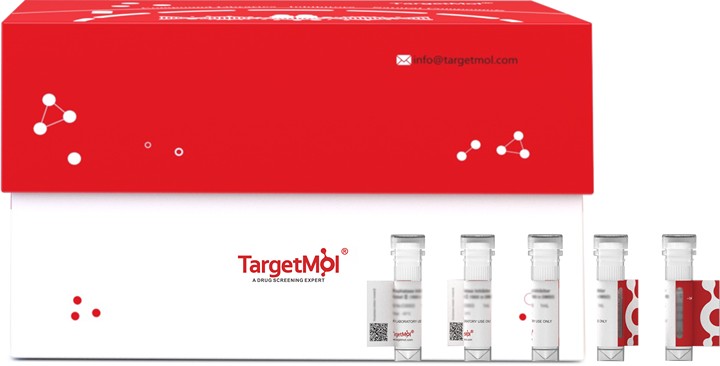- Remove All
 Your shopping cart is currently empty
Your shopping cart is currently empty
GNG13 Protein, Human, Recombinant (His)
GNG13 is a subunit of heterotrimeric G proteins which consist of alpha, beta, and gamma subunits. Heterotrimeric G proteins are membrane-bound GTPases that are linked to 7-TM receptors. They function as signal transducers for the 7-transmembrane-helix G protein-coupled receptors. They are involved as a modulator or transducer in various transmembrane signaling systems. Each G protein is composed of an alpha-, beta- and gamma-subunit and is bound to GDP in the 'off' state. Ligand-receptor binding results in detachment of the G protein, switching it to an 'on' state and permitting Galpha activation of second messenger signaling cascades. There are several types of Galpha proteins; besides, some Gbetagamma subunits have active functions. Gbetagamma coupled to H1 receptors can activate PLA2 and Gbetagamma coupled to M1 receptors can activate KIR channels. The beta and gamma chains are required for the GTPase activity, for replacement of GDP by GTP, and G protein-effector interaction. GNG13 is a gamma subunit that is expressed in taste, retinal, and neuronal tissues and plays a key role in taste transduction.

GNG13 Protein, Human, Recombinant (His)
| Pack Size | Price | Availability | Quantity |
|---|---|---|---|
| 100 μg | $700 | 7-10 days |
Product Information
| Biological Activity | Activity testing is in progress. It is theoretically active, but we cannot guarantee it. If you require protein activity, we recommend choosing the eukaryotic expression version first. |
| Description | GNG13 is a subunit of heterotrimeric G proteins which consist of alpha, beta, and gamma subunits. Heterotrimeric G proteins are membrane-bound GTPases that are linked to 7-TM receptors. They function as signal transducers for the 7-transmembrane-helix G protein-coupled receptors. They are involved as a modulator or transducer in various transmembrane signaling systems. Each G protein is composed of an alpha-, beta- and gamma-subunit and is bound to GDP in the 'off' state. Ligand-receptor binding results in detachment of the G protein, switching it to an 'on' state and permitting Galpha activation of second messenger signaling cascades. There are several types of Galpha proteins; besides, some Gbetagamma subunits have active functions. Gbetagamma coupled to H1 receptors can activate PLA2 and Gbetagamma coupled to M1 receptors can activate KIR channels. The beta and gamma chains are required for the GTPase activity, for replacement of GDP by GTP, and G protein-effector interaction. GNG13 is a gamma subunit that is expressed in taste, retinal, and neuronal tissues and plays a key role in taste transduction. |
| Species | Human |
| Expression System | E. coli |
| Tag | N-His |
| Accession Number | Q9P2W3 |
| Synonyms | h2-35,guanine nucleotide binding protein (G protein), γ 13,guanine nucleotide binding protein (G protein), gamma 13,G(γ)13,G(gamma)13 |
| Construction | A DNA sequence encoding the mature form of human GNG13 (Q9P2W3) (Met 1-Cys 64) was expressed, with a polyhistide tag at the N-terminus. Predicted N terminal: Met |
| Protein Purity | > 92 % as determined by SDS-PAGE |
| Molecular Weight | 9.7kDa (predicted); 9& 18kDa doublet (reducing conditions) |
| Endotoxin | Please contact us for more information. |
| Formulation | Lyophilized from a solution filtered through a 0.22 μm filter, containing PBS, pH 7.5. Typically, a mixture containing 5% to 8% trehalose, mannitol, and 0.01% Tween 80 is incorporated as a protective agent before lyophilization. |
| Reconstitution | A Certificate of Analysis (CoA) containing reconstitution instructions is included with the products. Please refer to the CoA for detailed information. |
| Stability & Storage | It is recommended to store recombinant proteins at -20°C to -80°C for future use. Lyophilized powders can be stably stored for over 12 months, while liquid products can be stored for 6-12 months at -80°C. For reconstituted protein solutions, the solution can be stored at -20°C to -80°C for at least 3 months. Please avoid multiple freeze-thaw cycles and store products in aliquots. |
| Shipping | In general, Lyophilized powders are shipping with blue ice. |
| Research Background | GNG13 is a subunit of heterotrimeric G proteins which consist of alpha, beta, and gamma subunits. Heterotrimeric G proteins are membrane-bound GTPases that are linked to 7-TM receptors. They function as signal transducers for the 7-transmembrane-helix G protein-coupled receptors. They are involved as a modulator or transducer in various transmembrane signaling systems. Each G protein is composed of an alpha-, beta- and gamma-subunit and is bound to GDP in the 'off' state. Ligand-receptor binding results in detachment of the G protein, switching it to an 'on' state and permitting Galpha activation of second messenger signaling cascades. There are several types of Galpha proteins; besides, some Gbetagamma subunits have active functions. Gbetagamma coupled to H1 receptors can activate PLA2 and Gbetagamma coupled to M1 receptors can activate KIR channels. The beta and gamma chains are required for the GTPase activity, for replacement of GDP by GTP, and G protein-effector interaction. GNG13 is a gamma subunit that is expressed in taste, retinal, and neuronal tissues and plays a key role in taste transduction. |
Dose Conversion
Calculator
Tech Support

Copyright © 2015-2025 TargetMol Chemicals Inc. All Rights Reserved.


